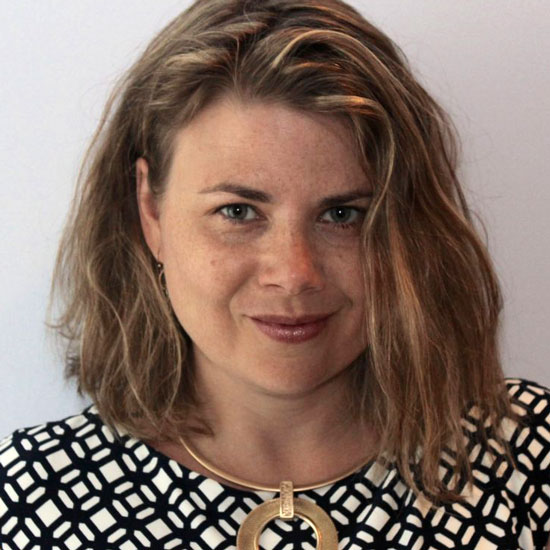Letting Go of Lecture Capture
Former Analyst

When Teaching and Technology Evolve, the Naming Conventions Must Too
“What’s in a name? That which we call a rose, by any other name would smell as sweet.” —William Shakespeare, Romeo and Juliet
Shakespeare notwithstanding, we know that names matter. Research indicates that a person’s name can influence life choices, career success, and possibly physical appearance. A product name builds recognition and signals to consumers what to expect. What we call things triggers socialized expectations, reinforces prevailing paradigms, and contributes to inertia. Since teaching and learning reform in higher education is no different from other types of cultural change, how we name things affects our ability to transform pedagogical practice.
As a higher education analyst, I frequently meet with campus IT and industry leaders and review institutional and vendor publications. Because I am also a teaching and learning scholar, I scan for embedded assumptions that might prevent instructional designers or faculty from implementing educational technologies according to best practice. I’ve written about how the belief that in-person instruction is innately superior negatively impacts tech choices for hybrid-flexible learning. However, a more pervasive (if less burning) problem is the ongoing use of the term lecture capture by campus IT leaders, academic technology websites, and vendors to define the products that allow faculty to create and share educational media with their students.
Instructional designers cringe when videorecording, screen-casting, and editing technologies are classified as lecture capture because the term is woefully inadequate for describing their pedagogical potential. The label is harmful when it reinforces faculty’s traditional expectations and limits their ability to think outside the pedagogical box. Therefore, it’s time for institutional IT departments and ed-tech providers to let go of lecture capture in favor of a more inclusive name that opens the door to more creative and engaging media use in the higher education classroom.
The Problem
“Give a small boy a hammer, and he will find that everything he encounters needs pounding.” —Abraham Kaplan, The Conduct of Inquiry: Methodology for Behavioral Science
As a Panopto blog post reminds us, lecture capture is as old as lecturing itself. Student notetaking and audio recording meet the term’s technical definition, generally considered to be the process of recording classroom lecture content for later review. Video-based lecture capture emerged, first as on-premises hardware and software, followed by cloud-based and integrated solutions that allow faculty to record and organize class lectures through LMS and video content management workflows. The technology further evolved to include more editing and post-production functionality when faculty began creating video content for flipped, hybrid, and online courses. Although the use cases and technology have expanded far beyond in-class lecture recording, vendors and many institutions continue to call it lecture capture in their faculty-facing resources. Instructional designers can point out three reasons this is not a great idea.
1. Not All Use Cases are Synchronous
Merriam-Webster defines lecture as “a discourse given before an audience or class especially for instruction.” Therefore, lecture capture makes sense when faculty record in-person class presentations, but it does not accurately reflect the media faculty create with the same technologies for asynchronous educational use cases. Instructional designers report that the natural connection between lecture capture and synchronous instruction can initially limit faculty imagination in considering how they might use the technology to support learning in other ways.
For example, some faculty falsely assume that in-class lecture capture is the best (or only) option for educational media creation. While in-class recordings may be useful for students who missed class, they rarely translate to engaging or effective asynchronous learning. Since students experience lectures differently through video than in person, the recorded content typically requires significant redesign and editing to achieve equivalent outcomes. In many cases, faculty who teach in-person and online courses are better-served recording video specifically for their online courses rather than attempting to repurpose in-class lectures.
2. Not All Use Cases Involve Direct Instruction
As an instructional strategy, lecture is closely associated with direct instruction or content delivery. While direct instruction works well for conveying definitions and basic facts, research indicates that more students will learn more effectively when instructors balance mini-lectures with self-directed, case or problem-based, collaborative, and experiential learning activities within and across coursework.1 Lecture capture assumes a narrow view of the instructional strategies that media can support. On the contrary, I have worked with faculty to record discussion and assessment stimuli, interviews, testimonials, case scenarios, problem statements, demonstrations, and fireside chats with their lecture-capture technologies. These use cases support best practices in active learning. None of them existed within the faculty frame of reference before I provided a sample showcase—because every faculty member was hung up on the word lecture.
3. Faculty Need the Technology to Do So Much More
Most lecture-capture technology has evolved for the asynchronous use cases I’ve already described. If institutions offer technology that supports use cases other than in-class lecture capture but continue to call it lecture capture, they may discourage complete and effective technology implementation.
A Solution for Campus IT Leaders
“Our Age of Anxiety is in great part the result of trying to do today’s job with yesterday’s tools—with yesterday’s concepts.” —Marshal McLuhan and Quentin Fiore, The Medium is the Massage
Campus IT leaders who manage educational technologies should consider the following strategies to encourage faculty to leverage videorecording, screen-casting, and editing technologies more frequently for more diverse use cases.
1. Update Messaging and Websites
Modernize how IT support staff talk about videorecording, screen-casting, and editing technologies by making it more inclusive. Instead of defaulting to lecture capture, consider something like educational media creation. If you like the specificity of in-class video recording, balance it with an asynchronous equivalent like self-service video creation.2
2. Signal the Vendors
While some vendors have a sound grasp on the changing educational use cases for their products, others still use lecture capture as a catch-all term. The more faculty and institutions can signal to vendors that this is not helpful, the more likely they are to change.
3. Double Down on Faculty Development
The Kaltura 2020 State of Video Education in Education Report indicates that many faculty with access to videorecording, screen-casting, and editing technologies do not know how to use them effectively. Although many of the tools are intuitive, the evidence-based pedagogies they support are less so. Faculty need time and incentives to learn best practices in video-based learning and to leverage educational technologies to implement them.
1 Mini-lectures in face-to-face settings are generally defined as 20 minutes or less. Research indicates online video lectures must be much shorter to be effective—preferably less than 3 to 5 minutes each.
2 Self-service video is trending in the vendor space to describe asynchronous videos for self-directed learning. I have some reservations with the term since it implies more learner autonomy than may exist, but it is better than lecture capture for describing an asynchronous learning context.
Categories
Share Article:

Other Posts From this Author:
© Copyright 2025, The Tambellini Group. All Rights Reserved.